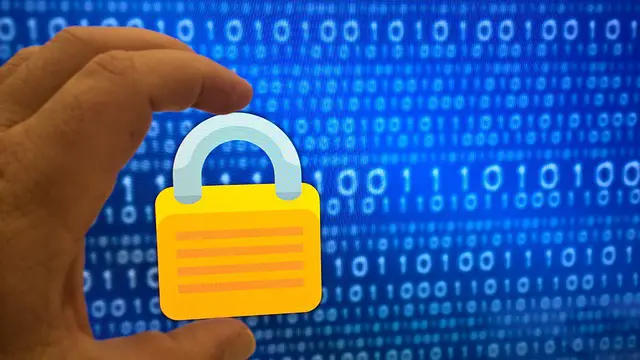
With managed detection and response, organizations can outsource their IT security to an underdefense mdr service. In the MDR (Managed Detection and Response) offering, the Underdefense vendor installs the technology locally at the customer and provides additional external automated services through software. Managed detection and response (MDR) improves cybersecurity by enabling these services to analyze and respond to threats as soon as they are detected. This allows users to connect with the vendor’s security experts, who can support the user’s IT department. As such, these services are particularly suitable for companies that do not have threat detection experts on their teams. The growing popularity of MDR Underdefense services is also due to the labor market’s lack of skilled workers and cybersecurity skills.
On the other hand, ITDR – Identity Threat Detection and Response isn’t a thing you can buy, but more like a plan that includes different tools, steps, and rules to keep things safe and secure.
What do managed detection and response do?
MDR services can play an active role in improving a company’s cyber security. Includes threat detection, incident response, and continuous monitoring and analysis of IT assets. Exemplary service can solve everyday IT problems such as:
Too many alarming messages. Managed detection and response helps organizations manage large numbers of alerts that require a separate investigation. Too many signs can overwhelm a small security team and cause other tasks to be ignored.
Thorough threat analysis. Not all warnings are immediately dangerous. In most cases, a detailed analysis is required to determine the situation. MDR services provide advanced analytical tools to help you interpret and classify events. Contact a security professional. Suggestions for improvement are also provided.
Lack of skills. Experts estimate that millions of empty threats worldwide will continue to exist for years. MDR services can often solve this problem by providing access to a team of experts who are available 24/7. This applies to monitoring the IT environment and, if necessary, consulting services.
Endpoint detection and response. Organizations may not have the resources, time, or skills to train their teams and employees to use endpoint detection and response (EDR) tools. MDR products often include EDR tools and integrate them into incident detection, analysis, and response processes. As with many XaaS (as a service) models that outsource modern IT processes, companies sacrifice some control for convenience and cost flexibility.
MDR as traditionally managed security
The MDR approach and traditional managed security products serve the same general function as external enterprise cybersecurity support. However, there are some differences between managed detection and response and specific managed security services:
Compliance – Traditional managed security services (MSSPs) often focus on compliance reporting and helping companies comply with compliance policies, and MDR services rarely focus on this area. Log file formats. MSSPs generally handle a wide range of contexts and event logs. On the other hand, MDR products usually only use the recording format that came with the device. Human Interaction – In most cases, MSSPs manage all communications through online portals and email. MDR services typically include a team of experts or a Security Center (SOC) available in real time across multiple channels.
Detection Methods – The human expertise provided by MDR Underdefense solutions provides deeper analysis to prevent and detect new threats. MSSPs are typically less involved in scanning and focus on known and prevalent threats. Network visibility – Managed discovery and response can see events and traffic on a customer’s network, and MSSP usually focuses on the network’s edge. Both approaches have advantages and disadvantages. MSSPs are suitable for managing core security technologies such as firewalls and performing day-to-day security tasks. MDR offerings are more specialized services designed to address the complexity of today’s networks and the new vulnerabilities that come with them. Thus, nothing prevents the joint use of both proposals to optimize security.
Typical properties of MDR products
The MDR Underdefense offering differs for each company; the market is still relatively new. Differences can be, for example, in the network in which the solution works. However, plans combine multiple technology accounts to achieve the following features:
Threat detection is when the SOC continuously monitors data and prioritizes alerts for analysis.
Threat analysis. SOC specialists identify potential threats and determine the source and extent of threats.
The threat response is where the vendor notifies the customer of the incident and offers detailed proposals to resolve the issue.
Products often differ in their ability to respond to threats. Each provider decides when to stop, and the user solves the problem himself. Some suppliers offer options such as on-site expert consultation and installation of additional equipment at the customer’s premises for an additional fee.
When choosing a supplier, companies should consider the following for their organization:
Company size.
Security team size and qualifications.
Security solutions that already exist.
Eligibility rules.
Of all the essential elements of information security, network monitoring and activity logging require far more attention than other security measures, such as encryption, authentication, and rights management. Log data should be collected, aggregated, and analyzed to help identify anomalies. With so much data, security incident management software tools are essential for businesses of all sizes.
What is controlled detection and response?
A traditional SIEM cannot process an event when it reaches a certain level, and companies must rely on managed detection and response (MDR) services in these cases. MDR vendors and SIEM systems are highly automated because the amount of log data is too large to review manually. MDR Benefits: An Underdefense provider provides cybersecurity professionals who have taken the first steps in incident mitigation and root cause analysis. Another benefit of an external response team is that you can respond to incidents more efficiently without compromising your resources. The MDR is often touted as an extension of the National Security Operations Center (SOC).
A leading provider of MDR solutions
This service-related component means that service level agreements, response times, and other service performance criteria must be considered when selecting an MDR provider. Organizational requirements vary widely based on company size, industry compliance, and individual needs. Underdefense monitors its clients’ networks around the clock. Underdefense can automatically detect threats and events. The service links event data to business objects and prioritizes and responds to incidents using validated threat context. The Underdefense team will also take the first steps to respond to incidents, where appropriate, provide recommendations to address the root cause of recurring incidents. Underdefense helps you manage active threats with a managed detection and response service. In addition, the solution automatically scans for threats, constantly scans your system for vulnerabilities, and assesses risks. Underdefense offers EDR solutions and monitors mobile device security. In addition to 24/7 monitoring, Underdefense offers advanced threat detection with the MDR service, which has unique capabilities for analyzing and monitoring hacking methods. Experts guide their clients through automation tools that can improve response to potential cyber incidents. For businesses affected by incidents and false alarms, Underdefense also offers a review of previous security solutions to fine-tune their services.










